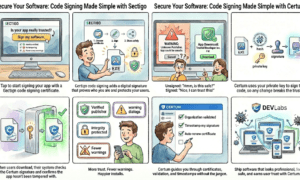A contact center is a company department that handles customer interactions across various communication channels, including phone, SMS texting, web chat, email, social media, and video.
It serves as the hub for customer support, sales, and other customer-facing activities. Modern contact centers have evolved from traditional call centers, which relied primarily on landline phones, to sophisticated, software-based systems that support remote work and omnichannel communication.
Key features of modern contact centers
1. Multi-channel support
In the digital age, businesses must be accessible across various channels. Modern contact center software ensures customers can connect via phone, email, chat, social media, or messaging apps, catering to their preferences.
2. Omnichannel integration
Omnichannel support surpasses multiple communication channels by focusing on consistent customer experiences across all platforms. Agents access complete customer history and context, regardless of the initial contact channel.
3. Interactive Voice Response (IVR)
A robust IVR system automates processes and directs callers efficiently, allowing agents to concentrate on complex issues.
4. Call routing and queuing
Effective call routing directs calls to suitable agents, with queuing informing consumers about wait times and position to manage expectations.
5. Quality monitoring and analytics
Monitoring interactions and using analytics improves service quality. Features like call recording, real-time monitoring, and analytics tools enhance agent performance and customer satisfaction.
6. CRM integration
Integrating with CRM systems gives agents access to client information and preferences for personalized interactions, crucial for exceptional service.
7. Real-time reporting and dashboards
Supervisors track KPIs such as agent productivity and wait times using real-time reporting and customizable dashboards.
8. AI and automation
Contact center software employs AI and automation tools like chatbots to handle routine inquiries, boosting efficiency and enabling agents to focus on complex tasks.
9. Scalability
Scalable contact center software accommodates business growth by adding agents, channels, and features seamlessly.
10. Security and compliance
Ensuring customer data security and compliance with regulations like GDPR and HIPAA is vital. Look for software with robust security features for simplified compliance.
11. Remote work capabilities
Contact center software supports remote work, allowing agents to work from anywhere with internet access while maintaining data security and performance standards.
12. Customization and integration
Choose software that can be customized to specific needs and integrates well with other organizational tools and applications.
13. Training and support
Opt for software solutions that include comprehensive training and support to empower staff in effectively using features and troubleshooting issues.
Benefits of a contact center for customer service and experience
1. Deliver omnichannel support
Omnichannel contact centers consolidate customer information from chatbots, forms, and representatives into one place, providing agents with a complete picture of the customer and their issue. This system streamlines interactions by ensuring agents have all the necessary information, eliminating the need for customers to repeat themselves.
2. Improve customer satisfaction
Contact centers improve customer satisfaction by offering various communication channels to suit different needs. High-stakes issues can be handled via phone, while low-stakes queries can be addressed through email or chat. This flexibility, combined with streamlined interactions and personalized experiences, enhances customer relationships and satisfaction.
3. Promote collaboration
Centralizing customer interactions in a contact center hub allows for efficient team communication and collaboration. Agents can share insights, solutions, and best practices, drawing from a collective knowledge base to provide consistent and accurate responses. This environment enhances team cohesion and ensures high-quality service.
4. Increase sales opportunities
Multichannel communication in contact centers enables more revenue opportunities than phone-only call centers. Agents can upsell and cross-sell products or services by sending links or sharing information about upgrades, leveraging various online channels alongside phone support.
5. Gain customer insights
Contact centers allow agents to gather insights into customer needs, preferences, and behaviors across multiple touchpoints. Analytics software tracks key metrics, helping identify trends and potential issues early. For instance, detecting frequent mentions of a “credit card scam” in chats and emails enables a bank to respond quickly and address the problem.
Essential features & technologies
Modern contact centers utilize a range of features and technologies to optimize customer service and streamline operations. Some critical features include:
- Communication channels: Provide voice, SMS, web chat, email, video, and social media messaging options.
- User dashboard: A centralized platform for agents to access all channels and manage tasks.
- IVR: Automated systems to route calls or offer self-service options.
- Call queues: Hold incoming calls until an agent is available.
- Reporting and analytics: Deliver insights into agent performance, call activities, and customer interactions to enhance service quality.
- Call monitoring: Tools enabling supervisors to listen in, whisper, join, and take over calls to support agents in real-time.
- Quality management: Tools for assessing and coaching agents to maintain high service standards.
- Workforce management: AI-driven tools to predict staffing requirements and schedule shifts, boosting operational efficiency.
- Live chat support – It enables customers to interact with support agents in real-time via text-based messaging directly on the company’s website or through a dedicated application.
Conclusion
A contact center is pivotal in organizations, managing customer interactions via phone, SMS, email, web chat, social media, and video. Originally a call center, it has evolved into a sophisticated system enabling remote work and omnichannel communication. Modern features include multi-channel support, integrated omnichannel capabilities, IVR systems, efficient call routing, quality monitoring, CRM integration, real-time reporting, AI utilization, scalability, security measures, remote work support, customization, and comprehensive training programs.
The advantages of a contact center are manifold for businesses. They facilitate omnichannel support, enhance customer satisfaction levels, foster team collaboration, boost sales potential, and yield valuable insights into customer behavior. By harnessing these capabilities, contact centers significantly contribute to elevating both customer experience standards and operational efficiencies within organizations.



































